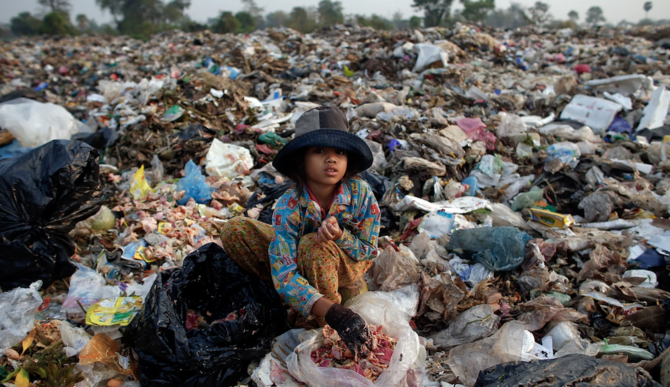Every human can make a difference in fight to cut waste

https://arab.news/5cur6
As the world marked yet another International Day of Zero Waste last week, it may be about time to look seriously at cutting the waste generated in every aspect of human life, mainly due to the modern lifestyle that is unfortunately spreading like a virus around the world, moving from rich countries to developing and even poor countries.
Waste has a serious impact on all aspects of the environment — be it land degradation, global warming, greenhouse gas emissions or increasing the toxicity of our water, air and soil. For instance, food and household waste is said to be responsible for at least 20 percent of methane production in the US every year. Methane is about 80 times as potent as carbon dioxide in heating up the planet. Globally, food waste and other organic waste accounts for 65 percent of all the waste dumped in landfills around the world.
The amount thrown away is rising every year and across all countries, with few exceptions. According to World Bank estimates, global waste generation is set to rise to 3.88 billion tons a year by 2050, an increase of 73 percent over 2020. This could lead to a rise in methane emissions of more than 13 megatons per year in the next decade alone, which would have a severe impact on global warming.
Even though most of the growth in waste generation in absolute terms will come from Africa and South Asia, mainly due to sharp increases in population, the burden of the rich nations is not headed for a decrease, even though their populations have stabilized or are decreasing. The rich countries account for only 16 percent of the global population, yet generate 34 percent of all solid municipal waste.
According to the World Bank, the per capita waste generated per day in the North America region — already the highest in the world — is set to rise from 2.21 kg in 2016 to 2.5 kg in 2050. In comparison, the figure for South Asia will rise from 0.52 kg to 0.79 kg and sub-Saharan Africa’s will go from 0.46 kg to 0.63 kg.
The situation is no different in water wastage. The per capita consumption of water in the US is 3,800 liters per day, while that of the Democratic Republic of Congo is a measly 34 liters. While domestic water consumption is rising and there can be wastage, the biggest factors responsible for rising water consumption are agriculture, automobiles, beverages and textiles. One pair of jeans takes up to 11,000 liters to make, while a cup of coffee takes 140 liters to make.
More water being consumed around the world means more water is being wasted, which then flows into the ocean of sewage that is being produced every day.
Ranvir S. Nayar
More water being consumed around the world means more water is being wasted, which then flows into the ocean of sewage that is being produced every day. More than 2 million tons of sewage and industrial and agricultural waste is discharged into the world’s rivers, lakes and oceans every day. This has led to a high level of pollution of natural water resources, notably freshwater supply. As a result, more than 20 percent of the 10,000 known freshwater fish species have become extinct or imperiled in recent decades.
The story is no different when it comes to air or soil pollution, which have also risen sharply in the past few decades due to humanity’s activities and waste generation. Mountains of plastic sit all over the world, degenerating into microplastics that pollute air, water and land.
Yet, eliminating or at least reducing waste is not only the most logical step to be taken by every human, every company and every institution around the world, but is also the easiest. It is logical as it makes the best economic sense, especially in times like these, where near-record inflation is hurting not just the poor but even the middle classes all over the world. Not many realize the obvious fact that buying only what is needed and in the quantities needed leads to enormous savings for households and companies alike. Also, if one starts to buy only what is needed when it is needed, it will curb the mindless growth in production of all kinds of goods. Once again, more production means more pollution and a negative impact on the environment.
Most ironic of all is that solutions to cut waste exist all around, it is just a question of implementing them. For instance, to cut food waste, hotels and restaurants can reduce the size of their servings and excess food can be taken home by staff or given to the needy. It is also time to review best-by and use-by dates to ensure that food that is safe to consume is not thrown away. It is also important to link large producers of food waste to food banks. One of the UN Sustainable Development Goals is to halve per capita food waste by the year 2030.
While curbing food waste is more dependent upon individuals, there are areas where governments and businesses need to step in. Governments should provide incentives for the production and purchase of energy-efficient devices and vehicles, as energy consumption is the largest source of pollution. Waste prevention is even better than recycling in fighting climate change and reversing environmental degradation. Its biggest advantage is that waste prevention does not depend on any external factor. Every human can begin to make a difference anywhere and also see the benefits immediately.
- Ranvir S. Nayar is managing editor of Media India Group.










































